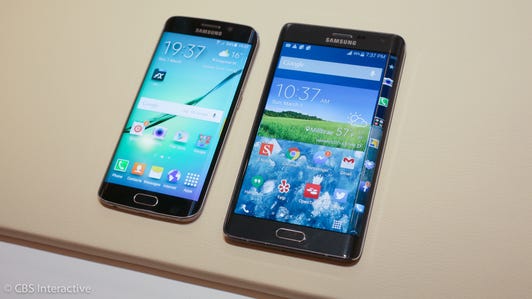
After a strong end to 2014, the smartphone market seems to have taken a turn.
Samsung warned on Monday that it would miss Wall Street’s expectations for the second quarter, an indication of a rough start for its flagship Galaxy S6 smartphone. Also on Monday, HTC reported that it has swung back into the red. Last week, Chinese smartphone vendor Xiaomi said its sales pace for the year has slowed significantly.
Their results underscore the challenges that all smartphone vendors — with the potential exception of Apple — face as consumers upgrade their smartphones less frequently and are less impressed by newer devices’ incremental improvements. Moreover, the once hot growth market of China appears to be reaching a saturation point for first-time buyers, with cooling demand there, too.
“Vendors in China will have to win replacement buyers and improve the appeal of their premium offerings to attract upgrades,” Gartner analyst Annette Zimmermann said in a statement.
It’s all part of a slowdown across the entire the consumer electronics market, according to Gartner. The research firm now forecasts global shipments of PCs, tablets and smartphones to grow 1.5 percent this year, down from its previous forecast of 2.8 percent growth. That slowing growth is pretty much across the board: Worldwide PC shipments will fall 4.5 percent this year. Shipments of tablets will drop 5.9 percent compared with 2014 numbers. And the market for mobile phones will slow to 3.3 percent growth, according to Gartner, which did not provide the market’s previous growth rate.
Hitting a wall
Samsung is the highest-profile company to offer bad news.
The Korean conglomerate on Monday said it expects a seventh straight profit decline as it continues to fight tough competition in the smartphone market. Samsung has been losing out particularly to Apple’s iPhone 6 and iPhone 6 Plus.
Samsung had hoped to regain its edge, so to speak, with its Galaxy S6 and S6 Edge , both released in April to critical praise. The S6 Edge drew special attention because of a unique shape that features two sides that drop down like an infinity pool. Samsung struggled to meet early demand for the S6 Edge, which the company said was more difficult to produce.
Do these things with the Samsung Galaxy S6 Edge’s edge (pictures)






Taiwan-based smartphone manufacturer HTC, meanwhile, posted a loss of $260 million in the second quarter and said it had closed some of its production facilities due to dropping sales.
HTC’s sales woes were attributed to lower demand for its high-end Android devices, including the HTC One M9 , and weak sales in China. The company previously cut its second-quarter revenue forecast and said that it would post its first loss after four profitable quarters.
Hot startup Xiaomi cooled off a bit when it reported last week that it had sold 35 million smartphones in the first half, missing its projected pace to hit 100 million units by end of the year. With demand in China slowing down, Xiaomi has been moving to expand into new areas, including launching into Brazil.
No need for new
Why are smartphone sales tapering off, even amid new phone launches? Ironically, part of the problem was a strong holiday season, which effectively reduced demand for the rest of the year, according to Jan Dawson, an analyst at Jackdaw Research.
Other factors include fewer basic phones that need to be replaced, and a shift by carriers to equipment installment plans, in which you pay a monthly fee for a device in exchange for a cheaper wireless plan, according to Roger Entner, an analyst at Recon Analytics. Such plans mean fewer people are switching to new devices because they no longer have to pay that fee once the smartphone is paid off, he said.
On top of that, many of this year’s newest devices were viewed as “incremental at best,” said Dawson. Sure, the new smartphones offer better cameras, more storage and handy features like fingerprint sensors. But none of the upgrades have been significant enough to justify an immediate upgrade.
It’s now up to the world’s smartphone vendors to figure out what they have to do to once again produce the hot devices consumers all want — and want it now.



